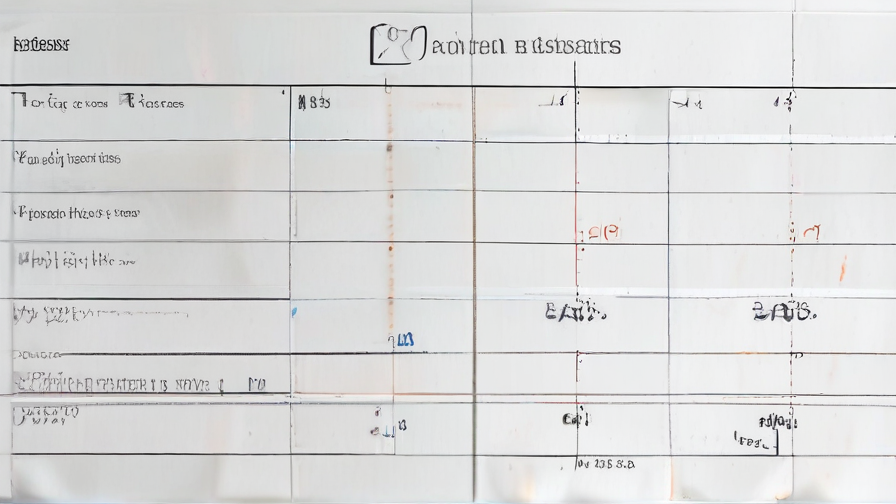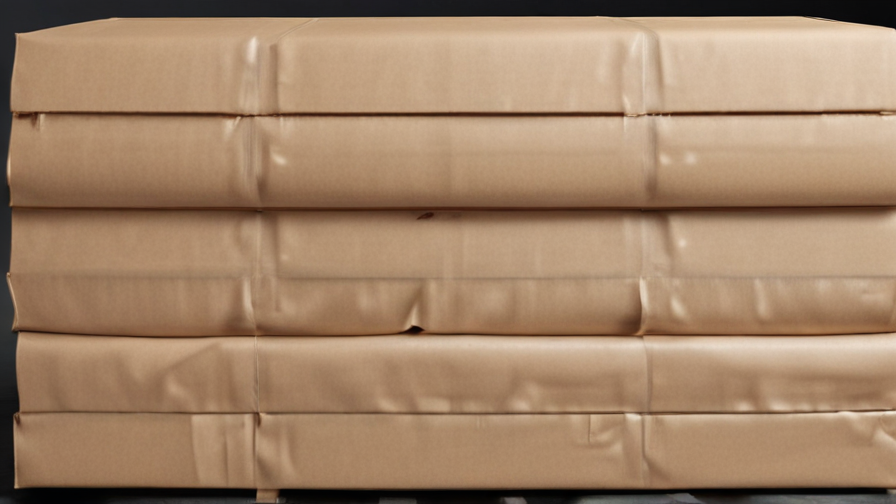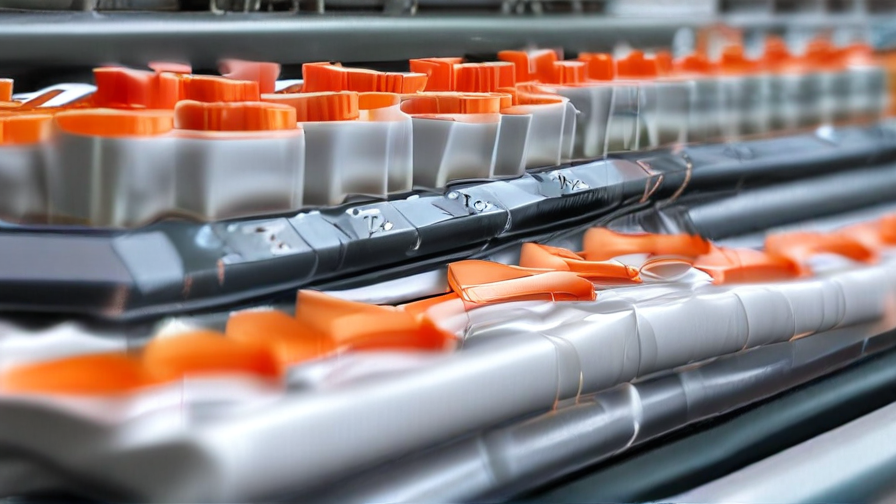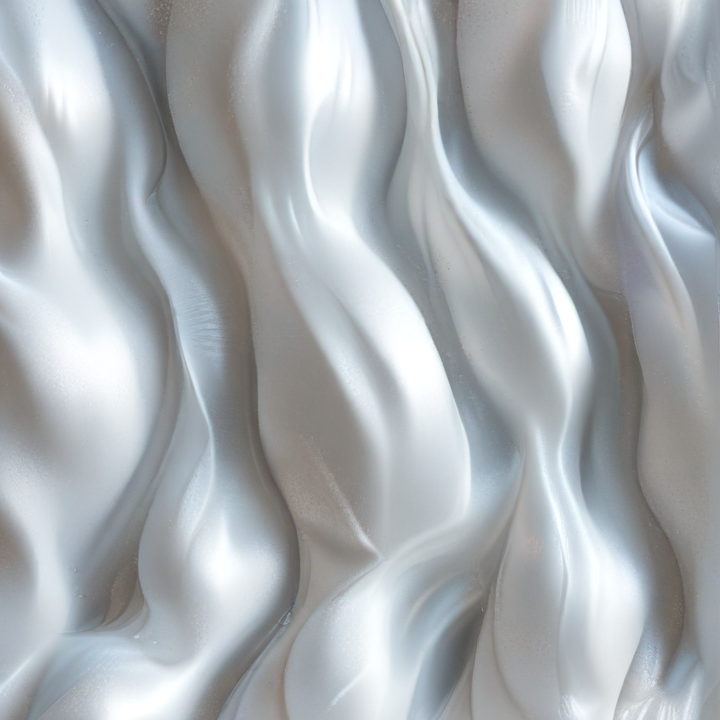flow packing Safety Certifications
Flow packing, a technique used to package items in a continuous, often automated process, involves various safety certifications to ensure that both the machinery and the packaged products meet regulatory and industry standards. Here are some key safety certifications related to flow packing:
1. ISO 22000: This international standard specifies requirements for a food safety management system. It ensures that organizations demonstrate their ability to control food safety hazards in order to ensure that food is safe at the time of human consumption.
2. FDA Compliance: In the United States, the Food and Drug Administration (FDA) regulates materials and processes involved in food packaging. Flow packing machines must comply with FDA regulations to ensure that they do not introduce harmful substances into the food products.
3. CE Marking: This certification indicates conformity with health, safety, and environmental protection standards for products sold within the European Economic Area (EEA). Flow packing machines with CE marking meet the EEA regulations, indicating that the equipment is safe to use.
4. GMP (Good Manufacturing Practices): GMP standards ensure products are consistently produced and controlled according to quality standards. Flow packing facilities that adhere to GMP are less likely to introduce contamination and ensure the products are manufactured in a hygienic environment.
5. BRCGS (Brand Reputation Compliance Global Standards): Specifically for food, it's a set of standards for food safety auditing and certification. BRCGS certification endorses that the flow packing operations meet high standards of safety, quality, and operational criteria.
6. UL Certification: Underwriters Laboratories (UL) certification is crucial for electrical safety. Flow packing machines with UL certification have been tested for safe operation, minimizing risks of electrical hazards.
7. HACCP (Hazard Analysis Critical Control Points): A systematic preventive approach to food safety that addresses physical, chemical, and biological hazards as a means of prevention rather than finished product inspection.
These certifications collectively ensure that flow packing operations are safe, hygienic, and compliant with national and international standards.
List Reference Technical Parameters of "flow packing"
Flow packing, often termed as horizontal flow wrapping, is a high-speed packaging process utilized in various industries to securely package products in a film. Here are some of the key technical parameters and considerations in flow packing:
1. Film Type and Thickness:
- Material: Common materials include BOPP, CPP, PE, and laminated films.
- Thickness: Typically ranges from 20 to 80 microns depending on product requirements.
2. Speed:
- Output Rate: Determined by machine capability, usually in the range of 50 to 300 packs per minute.
3. Sealing:
- Sealing Type: Heat sealing or cold sealing, depending on the film material.
- Temperature Control: Critical for heat sealing, with precise control often required in the range of 100-300°C.
- Sealing Time and Pressure: Time often less than a second; pressure depends on film and machine design.
4. Package Dimensions:
- Length, Width, and Height: Machines often tailored to handle specific product dimensions.
5. Product Feeding and Orientation:
- Feeder Systems: Automatic or manual feeding mechanisms, including rotary feeders, belt conveyors, and robotic arms.
- Orientation: Proper alignment ensures consistent packaging and minimizes film waste.
6. Machine Type:
- Horizontal vs. Vertical: Horizontal flow wrappers are common for solid, stable items.
- Servo vs. Mechanical: Servo-controlled machines offer precise control and flexibility.
7. Control Systems:
- PLC and HMI: Programmable logic controllers and human-machine interfaces for user-friendly operation and diagnostics.
- Sensors and Detectors: Ensure product presence, alignment, and quality control.
8. Film Transport and Tension Control:
- Film Unwinding Mechanism: Maintains consistent tension to avoid film tearing or misalignment.
- Tension Adjustments: Automated systems for real-time adjustment.
9. Product Characteristics:
- Shape and Consistency: Impacts the choice of machine and packaging technique.
- Sensitivity: Fragile products may require gentle handling mechanisms.
10. Environmental Factors:
- Cleanliness: Important for food-grade packaging.
- Temperature and Humidity: Can affect film properties and machine operation.
Understanding these parameters helps in optimizing the flow packing process, ensuring efficiency, product safety, and cost-effectiveness.
List Product features of "flow packing"
Flow packing, also known as horizontal form-fill-seal (HFFS), is a packaging process focused on efficiency and aesthetics. Here are its key features:
1. Versatility: Suitable for a wide range of products including food items (snacks, confectionery, bakery goods), pharmaceuticals, hardware, and more.
2. High-Speed Operation: Capable of packaging products at high speeds, which enhances productivity and reduces labor costs.
3. Continuous Motion: Uses a continuous flow of film for wrapping, ensuring smooth and consistent packaging.
4. Customizable Package Sizes: Accommodates various product dimensions, providing flexibility for different packaging needs.
5. Sealing Options: Features multiple sealing methods such as fin seals and lap seals, ensuring secure and tamper-evident packages.
6. Material Efficiency: Optimizes film usage, minimizing waste and material costs.
7. Hygiene and Safety: Ensures hygienic packaging, crucial for food and pharmaceutical products, while also complying with safety standards.
8. Automated Adjustments: Equipped with technology that allows for quick and easy adjustments, reducing downtime during product changeovers.
9. Print Capabilities: Supports on-film printing for branding, directions, and barcodes, enhancing the product’s market presence.
10. Integration: Can be integrated with other systems like weighers, metal detectors, and labeling machines for a streamlined packaging line.
11. Durability and Protection: Provides robust packaging that protects the product from damage and contamination during transit and storage.
12. Cost-Effective: Despite its high efficiency and advanced features, flow packing remains cost-effective by reducing labor and material costs.
13. User-Friendly Interface: Modern machines come with touch-screen interfaces, making them easy to operate and maintain.
14. Sustainability: Newer models often support eco-friendly packaging materials to align with sustainability goals.
In summary, flow packing offers a blend of speed, flexibility, and efficiency, making it a preferred choice for various industries seeking cost-effective and reliable packaging solutions.
List Various Types of "flow packing"
Flow packing, commonly used in the packaging industry, involves wrapping products in a continuous film, creating sealed packages. Various types cater to different needs and applications.
1. Horizontal Flow Packing (HFFS)
- *Description*: The product is fed horizontally into the machine, wrapped in film, and sealed on three sides.
- *Applications*: Ideal for solid items like biscuits, chocolates, and bakery products.
2. Vertical Flow Packing (VFFS)
- *Description*: The product is fed vertically into the machine. It's suitable for free-flowing items coated film is sealed at the top and bottom.
- *Applications*: Common for granular or powdered items like snacks, coffee, and rice.
3. Form-Fill-Seal (FFS)
- *Description*: The machine forms a pouch from a flat roll of film, fills it with product, and seals it.
- *Applications*: Versatile for both solids and liquids in various industries.
4. Horizontal Pillow Pack
- *Description*: A variation of horizontal flow packing where the package resembles a pillow.
- *Applications*: Snacks, confectionery, and pharmaceuticals.
5. Modified Atmosphere Packaging (MAP)
- *Description*: Involves replacing the air inside the package with a gas mixture to extend shelf life.
- *Applications*: Perishable goods like fresh produce, meat, and dairy.
6. Shrink Wrapping
- *Description*: Uses a film that shrinks tightly around the product when heat is applied.
- *Applications*: Bottles, CD/DVD packaging, and multi-packs.
7. Sleeve Wrapping
- *Description*: A sleeve of film is applied around the product and then sealed.
- *Applications*: Multipacking items like canned beverages.
8. Stick Pack
- *Description*: Produces a long, narrow packet from film, commonly with liquid or fine-grained contents.
- *Applications*: Single-serve items like powders, gels, and liquids.
These types of flow packing offer flexibility and efficiency, catering to a wide range of products and industries.
List Application of "flow packing"
Flow packing, or flow wrapping, is a versatile packaging technique where products are enclosed in a continuous film that is wrapped around them, forming a tight seal. This method is widely employed in various industries due to its efficiency and adaptability. Here are several key applications:
1. Food Industry:
- Confectionery: Wrapping candies, chocolates, and chewing gums to protect against contamination and extend shelf life.
- Bakery Products: Packaging bread, cakes, and pastries to maintain freshness and prevent drying.
- Snacks: Sealing chips, cookies, and nuts to keep them crisp and prolong usability.
- Meat and Dairy: Wrapping processed meats and cheese slices for hygiene and extended storage.
2. Pharmaceuticals:
- Medical Devices: Packaging items like syringes, gauze, and medical tools to ensure sterility.
- OTC Medications: Wrapping boxes of pills, tablets, and capsules for tamper-proofing and dosage integrity.
3. Cosmetics and Personal Care:
- Toiletries: Packaging soaps, lotions, and face masks to preserve quality and enable branding.
- Beauty Products: Sealing makeup products like lipsticks, compacts, and eyeliners for hygiene and safety.
4. Consumer Goods:
- Electronics: Protecting small gadgets, accessories, and cables from dust and moisture.
- Stationery: Wrapping pens, notebooks, and craft supplies for organization and retail presentation.
- Household Items: Sealing items like wipes, detergents, and cleaning sponges for convenience and cleanliness.
5. Automotive:
- Small Parts and Accessories: Protecting items like gaskets, filters, and automotive fasteners from dirt and damage during transit.
6. Industrial Products:
- Tools and Hardware: Securing drill bits, screws, and small components for retail and bulk packaging.
Flow packing's adaptability makes it suitable for products of various shapes and sizes, ensuring they are secure, attractive, and preserved during storage and transit.
List Buyer Types of "flow packing"
Flow packing, also known as horizontal form-fill-seal (HFFS) technology, is a versatile packaging method used across various industries. The common buyer types for flow packing machines include:
1. Food and Beverage Manufacturers
- Snack Foods: Companies producing chips, crackers, and other snacks use flow packing to maintain freshness and ensure a long shelf life.
- Confectionery: Chocolate, candies, and gums are often flow packed to prevent contamination and increase the aesthetic appeal.
- Bakery: Bread, cakes, and pastries are packed for hygiene and shelf longevity.
- Meat and Dairy: Cheese slices, cold cuts, and processed meat utilize flow packing for secure and attractive packaging.
2. Pharmaceutical and Medical
- Medicines: Tablets, capsules, and sachets of powders or granules use flow packing for tamper-proof packaging.
- Medical Supplies: Items like bandages, syringes, and other sterile products benefit from the hygienic packing.
3. Cosmetics and Personal Care
- Beauty Products: Single-use sachets of creams, lotions, and perfumes are often flow packed.
- Hygiene Products: Wet wipes and disposable tissues are efficiently flow packed to retain moisture and prevent contamination.
4. Electronics
- Small Components: Resistors, capacitors, and connectors are flow packed for organization and protection.
- Consumer Electronics: Accessories like USB cables and chargers are also commonly flow packed.
5. Automotive
- Spare Parts: Nuts, bolts, and small aftermarket parts are packed to prevent loss and damage.
6. Retail and Consumer Goods
- Stationery: Pens, erasers, and other small items are flow packed for neatness and convenience.
- Toys and Gadgets: Small parts and toys benefit from secure, transparent packaging.
Flow packing offers numerous advantages, such as increased product shelf life, tamper resistance, and enhanced visual appeal, making it a preferred choice for diverse industry applications.
List "flow packing" Project Types for Different Industries
Flow packing, also known as horizontal form-fill-seal (HFFS), is a versatile packaging method widely used across various industries. Here’s an overview of flow packing project types for different industries:
1. Food Industry:
- Bakery Products: Bread, cookies, croissants, and pastries.
- Confectionery: Chocolates, candies, and chewing gums.
- Snacks: Chips, nuts, and trail mixes.
- Dairy: Cheese sticks, yogurt tubes, and butter bricks.
- Frozen Foods: Frozen vegetables, ready meals, and ice cream bars.
2. Pharmaceutical Industry:
- Medications: Blister packs, tablets, capsules, and medical devices.
- Health Supplements: Soft gel capsules, vitamins, and probiotics.
- Medical Supplies: Syringes, bandages, and test kits.
3. Cosmetics and Personal Care:
- Beauty Products: Face masks, bath salts, and makeup removing wipes.
- Personal Hygiene: Soaps, sanitizing wipes, and disposable razors.
- Hair Care: Shampoo sachets, conditioner packs, and hair treatments.
4. Consumer Goods:
- Electronics: Small gadgets, cables, and batteries.
- Stationery: Pens, erasers, and sticky notes.
- Household Products: Cleaning wipes, sponges, and small tools.
5. Automotive Industry:
- Spare Parts: Small auto components, fuses, and bolts.
- Car Care Products: Cleaning wipes, air fresheners, and polishing cloths.
6. Agriculture:
- Seeds: Seed packets for various crops.
- Fertilizers: Small packs of plant nutrients and additives.
7. Textile Industry:
- Apparel: Socks, gloves, and undergarments.
- Accessories: Ties, scarves, and belts.
Flow packing enhances product protection, shelf life, and presentation, while also offering efficient production and versatility for a range of packaging needs.
flow packing Accessories Upgrades and Custom Manufacturing Options
Flow packing solutions offer a range of accessories, upgrades, and custom manufacturing options designed to enhance efficiency, functionality, and flexibility. Here are key aspects to consider:
Accessories
1. Feeding Systems: Automated infeed conveyors, bucket elevators, and vibratory feeders ensure smooth product transportation and precise alignment.
2. Film Roll Holders: Adjustable holders accommodate various film roll sizes for seamless operation.
3. Date Coders & Printers: Integrate date coding machines, thermal transfer printers, or inkjet printers for real-time labeling and traceability.
4. Gas Flush Systems: Preserve product freshness with nitrogen flushing for perishable items.
5. Seal Quality Monitors: Advanced sensors detect and alert for improper seals to maintain package integrity.
Upgrades
1. Software Enhancements: Updated control systems offer better usability and customization, marking improvements in HMI interfaces.
2. Servo Motors: Upgrade to servo motors for precise control, smooth operation, and reduced mechanical wear.
3. Enhanced Sealing: Introduce ultrasonic or high-pressure sealing technologies for stronger and faster seals.
4. Speed Boosts: Implement additional or upgraded drive systems to increase packaging speed.
Custom Manufacturing Options
1. Size Adaptability: Customizable machines can handle a diverse range of product sizes, from small sachets to large bulk goods.
2. Material Compatibility: Machines tailored to various packaging materials, including recyclable and biodegradable films.
3. Unique Product Handling: Custom feeders or forming boxes designed for non-standard, delicate, or irregularly shaped items.
4. Specialized Functions: Integrate custom printing, labeling, and inspecting mechanisms tailored to specific industry needs.
5. Integrated Systems: Seamlessly combine with other production line equipment for a fully automated and cohesive system.
Incorporating these accessories, upgrades, and custom options can significantly elevate the performance of your flow packing operations, ensuring both efficiency and quality in packaging.
List Quality Control and The Manufacturing Process of "flow packing"
Quality Control in Flow Packing
Quality control in flow packing ensures that products meet specified standards and regulations. Key aspects include:
1. Incoming Material Inspection:
- Evaluate raw materials (films, products) for defects.
2. Process Monitoring:
- Continuous assessment of temperature, pressure, and sealing parameters.
- Automated systems detect inconsistencies in real-time.
3. Visual Checks:
- Inspect seals, print quality, and overall appearance.
- Ensure proper alignment and label accuracy.
4. Weight and Density Control:
- Confirm product weight matches specifications.
- Verify pack consistency.
5. Seal Integrity Testing:
- Perform burst and leak tests to ensure airtight seals.
6. Metal Detection:
- Machines scan for contaminants.
7. Documentation and Traceability:
- Maintain logs for audits and compliance.
Manufacturing Process of Flow Packing
Flow packing, also known as horizontal flow wrapping, involves several key steps:
1. Material Preparation:
- Films on rolls are loaded into the machine.
- Products to be packed are pre-sorted and ready.
2. Product Infeed:
- Items are placed onto a conveyor belt.
- Feed belts align products for wrapping.
3. Film Feeding:
- Film is fed around a former to create a tube.
- Film tension is controlled to avoid wrinkles.
4. Product Wrapping:
- Products enter the film tube.
- Horizontal sealers make end seals.
5. Cutting and Sealing:
- Transverse sealers create individual packs.
- Cutters or knives operate in sync.
6. Cooling and Discharge:
- Packs pass through cooling zones.
- Finished packs are discharged for further handling.
7. Quality Inspection:
- Integrated systems check the final packs.
- Non-conforming packs are rejected.
Flow packing involves a continuous, automated process designed for efficiency and precision, ensuring high-quality, secure packaging. Quality control is vital at each stage to prevent defects and ensure product integrity.
---
How to use "flow packing"
Flow packing, also known as flow wrapping or horizontal form-fill-seal (HFFS), is a versatile packaging method used to wrap various products efficiently. This technique involves creating a continuous film tube around the product, sealing it, and cutting it into individual packages. Here’s a brief guide on how to use flow packing:
1. Choose the Right Machine: Select an HFFS machine suitable for your product’s size, shape, and production volume. Popular types include rotary and box-motion machines.
2. Material Selection: Pick the appropriate packaging film. Common materials include polypropylene, cellophane, and laminates. Ensure the film has the desired properties like barrier protection and printability.
3. Machine Setup: Install the film roll on the machine. Thread the film through the machine’s guides, forming box, and sealing jaws according to the manufacturer’s instructions.
4. Product Loading: Place the product on the conveyor. Products can be loaded manually or using an automatic feeder for higher efficiency.
5. Film Forming: The machine folds the film around the product, creating a tube. Ensure the product is aligned correctly for consistent wrapping.
6. Sealing Process: The machine seals the film longitudinally (along the length) and then transversely (across the width) using heat or ultrasonic sealing. Adjust the temperature and pressure settings based on the film type.
7. Cutting: After sealing, the film is cut to form individual packages. Check the machine settings to ensure precise, clean cuts.
8. Quality Control: Monitor the output for any defects like improper seals or misaligned cuts. Adjust settings as necessary.
9. Maintenance and Cleaning: Regularly clean and maintain the machine to ensure consistent performance and longevity.
Flow packing is ideal for a wide range of products, including food items, pharmaceuticals, and consumer goods. By optimizing machine settings and using the correct materials, you can achieve efficient and visually appealing packaging.
"flow packing" Comparative Analysis
Flow packing, a prevalent technique in the packaging industry, is celebrated for its efficiency and versatility. Here, we compare it against traditional and other modern packaging methods, focusing on efficiency, cost, flexibility, and environmental impact.
Efficiency
Flow packing excels in high-speed packaging, especially for items like food, confectionery, pharmaceuticals, and small consumer goods. The continuous motion of flow pack machines significantly boosts throughput compared to traditional batch packaging methods, such as manual wrapping and box packing. This makes flow packing suitable for large-scale operations requiring high output.
Cost
The initial investment in flow packing machinery can be substantial. However, the reduction in labor costs and the speed of packaging often result in long-term savings. Traditional packaging methods, while initially cheaper, incur higher labor costs and slower production rates, making them less cost-effective over time. Comparatively, newer automated packaging technologies may match or exceed flow packing in cost but often lack the same versatility.
Flexibility
Flow packing offers considerable flexibility in terms of product size and form. It accommodates a range of packaging materials, including plastics and laminates, and can easily adapt to various shapes and sizes. Traditional methods struggle with such versatility, often requiring different equipment or manual adjustments for different products.
Environmental Impact
Flow packing has faced criticism for its heavy reliance on plastic materials, contributing to environmental concerns. However, advancements are being made to integrate sustainable materials such as biodegradable plastics and recyclable films. Traditional packaging, often utilizing paper-based materials, can be more environmentally friendly but is not always suitable for all products. Emerging eco-friendly technologies aim to combine the efficiency of flow packing with sustainable practices, though these are still developing.
In conclusion, flow packing stands out for its high efficiency and flexibility but must address sustainability challenges. Compared to traditional and other modern methods, it provides a balanced approach in large-scale, cost-effective packaging operations. Nonetheless, ongoing innovations in packaging materials and technologies are essential to enhancing its environmental profile.
"flow packing" Warranty and Support
Flow Packing Warranty and Support
At Flow Packing, we take pride in the quality and durability of our products. To ensure customer satisfaction, we offer a comprehensive warranty and support policy that guarantees peace of mind for our esteemed clients.
Warranty Details:
1. Duration: All Flow Packing products come with a standard one-year warranty from the date of purchase.
2. Coverage: This warranty covers defects in materials and workmanship under normal use. If a product fails due to a manufacturing defect, we will repair or replace it at no additional cost to you.
3. Exclusions: The warranty does not cover damage caused by improper use, accidents, modifications, or natural wear and tear. Consumable parts, such as batteries, are also excluded unless the damage has occurred due to a defect in materials or workmanship.
Support Services:
1. Customer Service: Our dedicated customer service team is available to assist you with any inquiries or issues you may have. You can reach us via phone, email, or live chat during business hours.
2. Technical Assistance: For technical support, our expert technicians are on standby to troubleshoot and resolve any problems swiftly. Remote assistance or on-site service can be arranged if necessary.
3. Documentation: Comprehensive user manuals and troubleshooting guides are available on our website to help you make the most of your Flow Packing products.
Claims Process:
1. Initiate a Claim: Contact our customer service team with your purchase details and a description of the issue.
2. Evaluation: Our team will evaluate the claim and may request additional information or photos.
3. Resolution: If the claim is approved, we will guide you through the next steps for repair, replacement, or refund as applicable.
At Flow Packing, our priority is to ensure your complete satisfaction with our products. For any further questions or support needs, please don’t hesitate to contact us.
Contact Information:
Phone: [Your Company Phone Number]
Email: [Your Company Email Address]
Website: [Your Company Website URL]
Thank you for choosing Flow Packing.
List "flow packing" FAQ
Sure, here is a concise list of frequently asked questions about flow packing:
1. What is flow packing?
- Flow packing, also known as flow wrapping, is a packaging process where products are wrapped in clear or printed polypropylene film. The film is tightly sealed around the product to protect and showcase it.
2. What types of products can be flow packed?
- A wide variety of products can be flow packed, including food items (e.g., chocolates, bakery goods, fruits), non-food items (e.g., pharmaceuticals, electronics, cosmetics), and even industrial components.
3. What are the benefits of flow packing?
- Flow packing provides excellent product protection, extends shelf life, offers clear visibility, allows for high-speed packaging, and can reduce material waste compared to other packaging methods.
4. What materials are used in flow packing?
- The most common material is polypropylene, but other options like cellophane and polyethylene are also used, depending on the product's requirements for barrier properties and presentation.
5. Is flow packing environmentally friendly?
- This depends on the material used. Some flow pack films are recyclable or compostable. New technologies are also focusing on reducing material usage and improving the recyclability of packaging films.
6. What machines are used for flow packing?
- Flow pack machines, also known as flow wrappers, are specifically designed for this process. They come in horizontal and vertical configurations to suit different product types and production scales.
7. How fast is the flow packing process?
- The speed of flow packing machines varies but can range from a few dozen to several hundred packages per minute, making it suitable for both small and large-scale production.
8. Can the packages be customized?
- Yes, the film used in flow packing can be printed with various designs, logos, and information, allowing for substantial customization.
9. What are the maintenance requirements for flow pack machines?
- Regular maintenance involves cleaning, lubrication, and periodic checks of mechanical and electrical components to ensure consistent operation and longevity of the machine.
10. Is flow packing suitable for automated production lines?
- Yes, flow packing is highly compatible with automated production lines, enhancing efficiency and reducing labor costs.
This concise FAQ provides a snapshot of flow packing, its applications, benefits, and considerations.
Top 10 FAQ with answer about flow packing for Buyer Sourcing from China
Sure! Here's a concise list of the top 10 frequently asked questions (FAQs) about flow packing for buyer sourcing from China, with answers:
1. What is flow packing?
Flow packing involves encasing products in a continuous, clear, or printed film. It's ideal for high-speed production and offers excellent product protection and presentation.
2. Why source flow packing from China?
China offers competitive pricing, a wide range of materials, advanced technology, and high production capacities, making it a preferred source for quality flow packing solutions.
3. What are the common materials used in flow packing?
Common materials include polypropylene (PP), polyethylene (PE), and laminated films. These materials offer durability, flexibility, and moisture resistance.
4. How can I ensure the quality of flow packing from China?
Request samples before full production, work with reputable manufacturers, and consider third-party inspections. ISO certification can also be a good quality indicator.
5. What is the typical lead time for production and delivery?
Lead time varies but usually ranges from 15 to 45 days, depending on order size, customization, and the manufacturer's production schedule.
6. What are the minimum order quantities (MOQs)?
MOQs depend on the manufacturer but can typically range from 10,000 to 50,000 units. Smaller orders might incur higher costs per unit.
7. How do I handle shipping and logistics?
You can opt for FOB (Free on Board) or CIF (Cost, Insurance, and Freight) shipping terms. Work with a reputable freight forwarder to manage customs clearance and delivery.
8. Are there any compliance requirements?
Ensure compliance with international standards like FDA, EU regulations, and local laws for materials and additives. Provide clear specifications to suppliers to avoid regulatory issues.
9. Can flow packing be customized?
Yes, flow packing can be customized in terms of size, shape, material, and printing. Provide detailed specifications to manufacturers for accurate customization.
10. What are the payment terms typically offered by Chinese suppliers?
Common payment terms include 30% deposit with the balance paid before shipment, or through trade assurance and letter of credit (L/C) methods for assurance and security.
By addressing these FAQs, buyers can navigate the complexities of sourcing flow packing from China more effectively.





